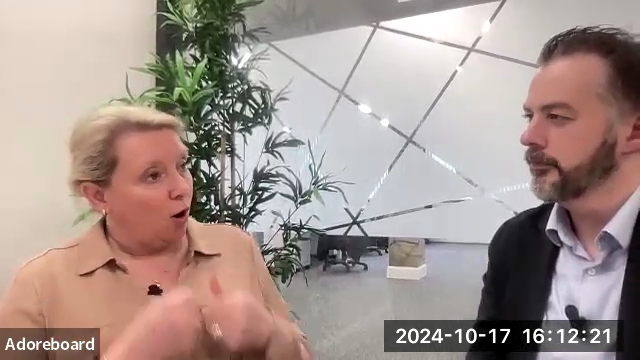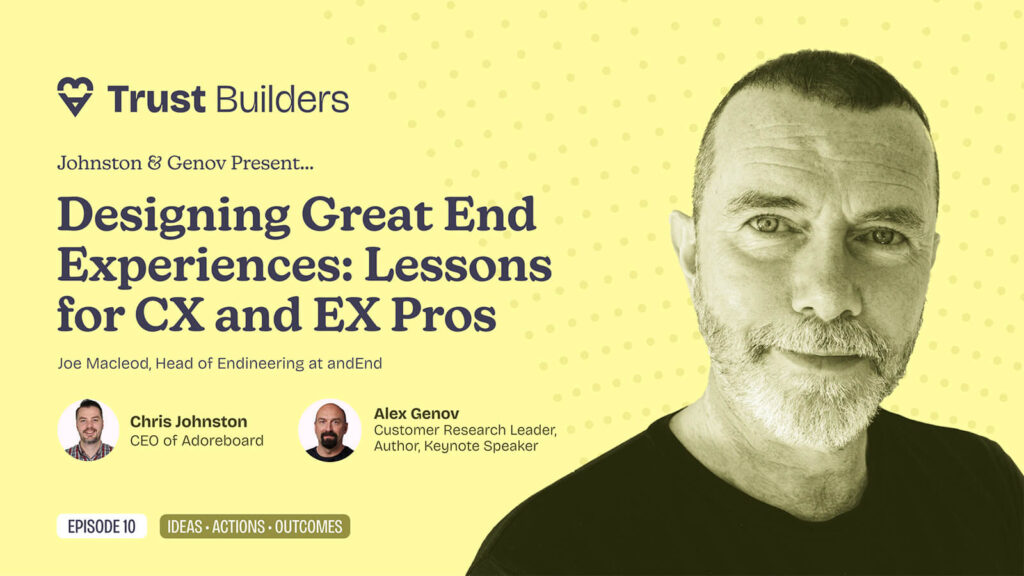This week we sat down with Annette Franz CCXP the founder and CEO of CX Journey Inc. She has over 25 years of experience helping companies understand their employees and customers. She was named as one of “The 100 Most Influential Tech Women on Twitter” by Business Insider and is an internationally recognised thought leader. She has recently published her first book, “Customer Understanding: Three Ways to Put the “Customer” in Customer Experience (and at the Heart of Your Business).”
Let’s get to the questions…
Tell us about yourself and what sparked your interest in the world of Customer and Employee Experience?
I’ve been in this customer space since the early 1990s when I started at J.D Power and Associates. It’s been interesting to watch the evolution of customer experience and employee experience over the last 25+ years, for sure. Today, I am founder and CEO of CX Journey Inc., a customer experience strategy firm that helps clients understand customers and employees in order to deliver a design and deliver a better experience, retain employees and customers, and see the business grow.
The employees and the employee experience have always been on my radar, since those early days at J.D. Power and Associates. I’ve been cognizant of the employee experience/ customer experience connection for that long. I would talk to clients about not only listening to customers but also listening to employees, and the usual response was, “We’ll focus on employees later.” That didn’t keep me from talking about it, pushing for it, and hoping that someday companies would take note and do something about it.
What inspired you to write your book “Customer Understanding: Three Ways to Put the “Customer” in Customer Experience (and at the Heart of Your Business)?
Oh boy! I’m not sure we have enough room here for the full story, but the short version goes like this. I love to write. I started by blog back in 2011, and as the content amassed and evolved, a lot of colleagues and authors encouraged me to take my content and format it into a book. My thought was, “Just what the world needs: another CX book!” But as my experience and my writings evolved, I began to get the itch to put it all into a book. I started working on the book about five years ago, in fits and starts. That book is not the same one that I published this year! And I’m so glad it’s not.
Last fall, as I walked off the stage after delivering a keynote, I said to myself, “that’s it. That’s the book.” The concept behind my keynote morphed into what the book is today.
How did you find the book writing process? Any learnings along the way?
The book writing process is an interesting one, but it came easy to me once I set my mind to it and once I knew the direction I would take. After that, the hardest part was really finding time to dedicate to it, i.e., balancing writing with client work and life in general.
The biggest learning is related to that last point: you have to make the time. I suppose it’s no different from anything else you want to accomplish: stop making excuses, make the time, and just do it!
What key learnings do you want your readers to take away from your book?
My book is ultimately about how to develop a customer-centric culture by bringing the customer and her voice into the organisation. I could’ve written an entire book about journey mapping, but there’s so much more to building a customer-centric business than journey mapping. The culture must first be deliberately designed to put the customer at the heart of the business.
Customer-centric companies ensure that they make no decisions, design no products and services, and implement no processes without first thinking of the customer and the impact that those have on the customer. They first ask, “How will this impact the customer? How will it make her feel? Will this help her solve her problems?”
It’s all about the customer. But you won’t have customers if you don’t have employees to build, sell, and to service the things that customers buy. A customer-centric culture really begins with the employees. Given that, all of the principles outlined in the book apply to both customers and employees.
What is your view on the link between employee experience and customer experience? Do you think they impact each other?
Quite simply: without employees, you have no customer experience. The linkage between employee experience and the customer experience has been proven. It’s real, and employees matter! If employees aren’t happy, satisfied, and engaged, or if they don’t have the tools, processes, and resources to do a great job, it will be very difficult for them to serve customers the way they deserve to be served.
What is one bit of advice you would give EX professionals or those looking to transform their employee experience?
First, leaders and executives must recognise and acknowledge that this employee experience/customer experience link is real, alson with understanding the benefits and outcomes of solidifying that linkage. Sadly, many don’t.
Second, I think it’s important to know what comprises the employee experience. It’s not free massages, ping pong tables, and jeans Fridays. It’s the sum of all interactions that an employee has with their employer over the duration of their employment relationship. It includes any way the employee “touches” or interacts with the company and vice versa in the course of doing her job. It also includes the actions and capabilities (including tools, resources, processes, policies, workspace, workplace) that enable them to do their job and, especially, the feelings, emotions, and perceptions the employee has about those interactions and capabilities.
Beyond that, EX professionals need to use the same tools and processes that CX professionals use. They’ve got to begin by understanding employees, which is achieved through listening (surveys and data), characterising (personas), and empathising (journey maps). As I say, you can’t transform something you don’t understand; so, you’ve really got to take the time to hone in on this understanding first in order to design a better experience for employees in the future.
That was three pieces of advice, but they are all important to the successful transformation of the employee experience!
What do you think the future holds for the employee experience space?
I do believe that employee experience is getting more airtime now. More thought leaders and companies are talking about it, learning about it, and questioning what it means for employees, customers and businesses. We still have a bit of work to do, but the more lost productive and costly turnover that businesses experience, the more imperative it will become for them to really understand their employees and improve the experience.
What is your most-used productivity hack?
I’m not alone in the fact that our to-do lists seem to grow astronomically every week. I try not to let that stress me out. Here’s what I do instead: I live day by day. Every night before I walk out of my office, I take a look at my calendar and at that big to-do list, and I write down the five things I must accomplish the next day. Sometimes I write six or seven things, but mostly I try to keep it to five, which is manageable without feeling overwhelming (on top of meetings and phone calls). If I accomplish those five things by mid-day, I go back to the big list and pull one or two more items into today’s list and finish those. (Don’t tell anyone, but sometimes I’m just happy to complete those five and give myself a break for the rest of the day!)
What publications, websites or thought leaders do you go to for engaging content? business or entertainment!
There are so many amazing thought leaders in this experience management space. I won’t name any names because I don’t want to forget anyone! Many of them are my friends. Instead, I’ll mention two shows and three books that I would recommend.
Two shows that I love to watch are Shark Tank (so much can be learned from the entrepreneurs and the advice the Sharks provide) and The Profit (in which Marcus Lemonis help struggling businesses).
And for anyone interested in improving the employee experience, you won’t want to miss these three books:
The Truth About Employee Engagement by Patrick Lencioni
Everybody Matters: The Extraordinary Power of Caring for Your People Like Family by Bob Chapman
The Customer Comes Second by Hal Rosenbluth
Definitely time well spent!
Thanks, Annette for your insight and expertise!
You can find more content by Annette:
Connect: www.cx-journey.com | @annettefranz | @cxjourney | LinkedIn
Order her book: Customer Understanding: Three Ways to Put the “Customer” in Customer Experience (and at the Heart of Your Business).




